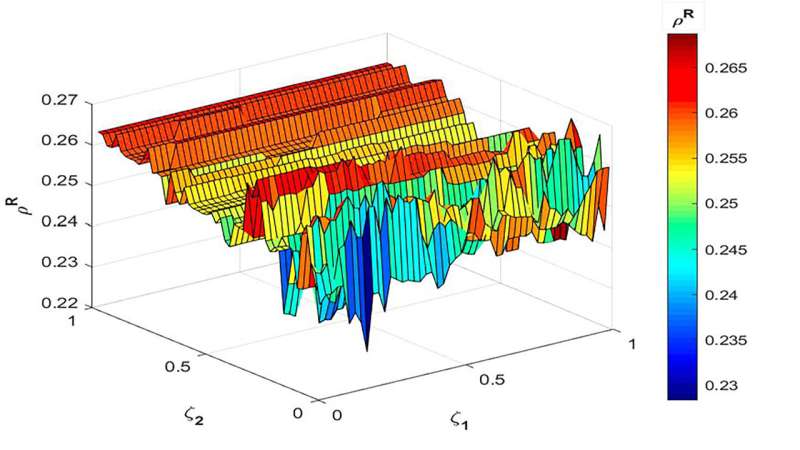The interplay between epidemics, prevention information, and mass media

When an epidemic strikes, more than just infections spread. As cases mount, information about the disease, how to spot it, and how to prevent it propagates rapidly among people in affected areas as well. Relatively little is known, however, about the interplay between the course of epidemics and this diffusion of information to the public.
A pair of researchers developed a model that examines epidemics through two lenses—the spread of disease and the spread of information—to understand how reliable information can be better disseminated during these events. In Chaos, Xifen Wu and Haibo Bao report their two-layered model can predict the effects of mass media and infection prevention information on the epidemic threshold.
"In recent years, epidemics spread all over the world together with preventive information. And the mass media affected the people's attitudes toward epidemic prevention," said Bao. "Our aim is to find how these factors influence the epidemic propagation and provide certain guidance for epidemic prevention and control."
To tackle their question, the researchers' model compares the interactions between two layers of information. The first is the transmission of the disease itself, propagated through physical contact between people. The second occupies the information space of social networks, where different voices are sharing the do's and don'ts of infection prevention, called positive and negative information respectively.
The model provides a set of equations that can be used to calculate the epidemic threshold using a technique called microscopic Markov chains.
Central to this calculation is the time delay between becoming infected and recovering. The longer it takes for patients to recover from an infection, they found, the less likely a patient is cured, leading to a lower recovery rate and making it easier for a disease to break out.
Disseminating effective prevention practices and using mass media, however, can increase the epidemic threshold, making it more difficult for the infection to spread. They simulate this by reducing the time delays related to recovery, which boosts recovery rates.
"The major challenge in our work is how to analyze the impact of positive information, negative information, and the mass media on the recovery rate and epidemic prevalence at the same time," Bao said. "What surprised us the most is that it is not always possible to improve the recovery rate by increasing the communication rate of mass media."
Bao hopes the work inspires others to use high-level mathematics to tackle such cross-disciplinary questions. They next look to analyze the impact of population mobility and vaccination.
The article "The impact of positive and negative information on SIR-like epidemics in delayed multiplex networks" is authored by Xifen Wu and Haibo Bao. The article will appear in Chaos on Nov. 22, 2022.
More information: The impact of positive and negative information on SIR-like epidemics in delayed multiplex networks, Chaos An Interdisciplinary Journal of Nonlinear Science (2022). DOI: 10.1063/5.0126799
Journal information: Chaos
Provided by American Institute of Physics




















